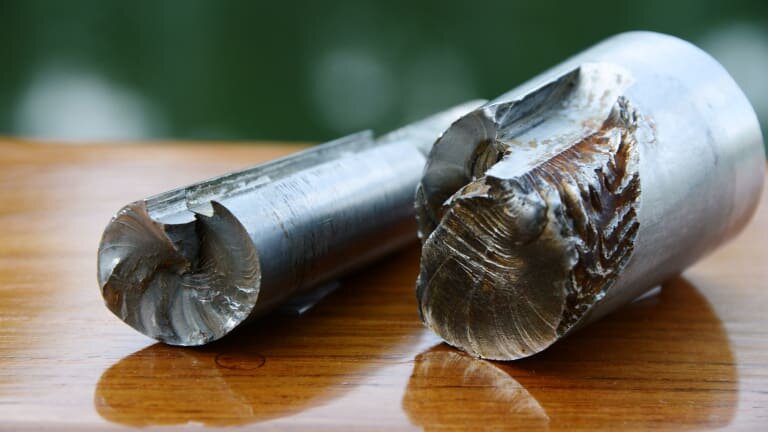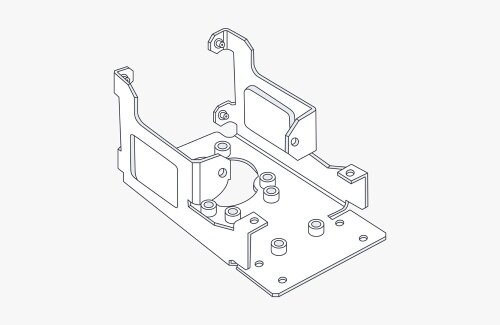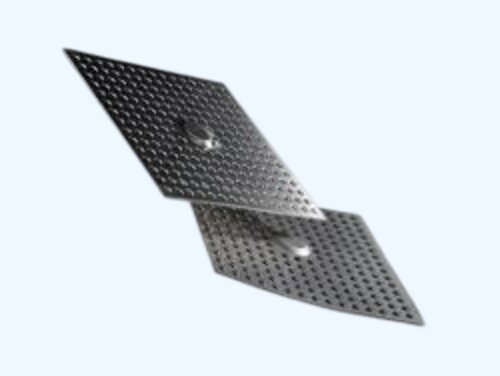Precisie maakt het verschil tussen een prototype dat perfect past en een prototype dat mislukt tijdens de assemblage. Bij plaatbewerking kan zelfs een kleine afwijking leiden tot spleten, trillingen of slechte prestaties. Nauwkeurige toleranties zijn niet zomaar getallen: ze zorgen ervoor dat elk onderdeel past en functioneert zoals het is ontworpen.
Om dit nauwkeurigheidsniveau te bereiken is meer nodig dan geavanceerde machines. Er zijn verstandige ontwerpkeuzes, stabiele procesbesturing en zorgvuldige inspectie voor nodig. In dit artikel onderzoeken we hoe nauwe toleranties worden bereikt en welke factoren daarop van invloed zijn. We bespreken ook hoe ingenieurs en fabrikanten kunnen samenwerken om nauwkeurige en betrouwbare plaatwerkonderdelen te maken.
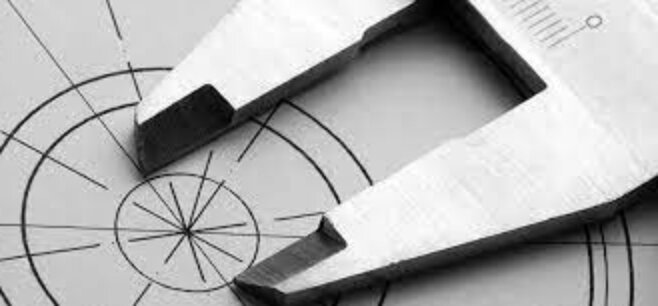
Nauwkeurigheid van afmetingen begrijpen
In plaatbewerking, tolerantie verwijst naar het toelaatbare verschil tussen de ontworpen maat en het werkelijk afgewerkte onderdeel. Elke stap, van snijden tot buigen, bevat een kleine foutmarge. Deze marge bepaalt hoe dicht het onderdeel bij de beoogde grootte moet liggen. Toleranties worden meestal gemeten in millimeters (mm) of micrometers (µm), afhankelijk van het precisieniveau dat vereist is voor het onderdeel.
Nauwkeurige afmetingen zorgen ervoor dat onderdelen goed passen tijdens assemblage. Als de afmetingen de ingestelde tolerantie overschrijden, kunnen onderdelen niet goed op elkaar aansluiten of kunnen er gaten ontstaan die de prestaties beïnvloeden. Voor werkende prototypes is het handhaven van nauwkeurige afmetingen cruciaal om te testen en de functionaliteit in de praktijk te garanderen.
Typische tolerantiebereiken
Elk fabricageproces bereikt een ander precisieniveau. Lasersnijden heeft meestal een tolerantie van ongeveer ±0,1 mm, afhankelijk van het materiaal en de snij-inrichting. CNC-bewerking biedt een nog strakkere controle, vaak met een nauwkeurigheid binnen ±0,05 mm of beter, vooral voor kleinere en meer gedetailleerde onderdelen.
Processen zoals buigen of vervormen hebben een groter bereik, meestal tussen ±0,2 mm en ±0,5 mm. Deze processen worden beïnvloed door factoren zoals terugvering en materiaalflexibiliteit. Lassen en assemblage kunnen ook kleine variaties toevoegen, vooral als warmte vervorming veroorzaakt.
Factoren die het tolerantievermogen beïnvloeden
Veel factoren beïnvloeden hoe precies een onderdeel kan worden gemaakt. Materiaalsoort is een van de belangrijkste. Roestvast staal is bijvoorbeeld complexer en minder flexibel dan aluminium, wat invloed heeft op de reactie op vormen of snijden. Dikkere materialen zijn ook moeilijker te controleren door warmte-uitzetting en veranderingen in machinedruk.
De machine-instelling heeft ook een grote invloed. Juiste kalibratie, schone gereedschappen en stabiele temperatuursomstandigheden dragen allemaal bij aan een betere consistentie. Vakkundige operators en de juiste inspectiemethoden helpen ook om de producten binnen het vereiste bereik te houden.
Uitdagingen bij het handhaven van strakke toleranties
Zelfs met moderne machines is het niet eenvoudig om elk onderdeel binnen nauwe toleranties te houden. Elke productiefase kan kleine veranderingen introduceren die de precisie en consistentie van onderdelen beïnvloeden.
Materiaalvervorming en spanning
Plaatmetaal kan vervormen onder invloed van hitte, druk of spanning. Bij lassen of lasersnijden zorgt hitte ervoor dat het metaal uitzet en vervolgens krimpt als het afkoelt. Dit proces kan leiden tot kromtrekken of kleine maatveranderingen, waardoor het onderdeel afwijkt van de beoogde tolerantie.
Interne spanning in het metaal kan ook problemen veroorzaken. Materialen die voor het snijden zijn gewalst of gevormd, kunnen een opgebouwde spanning hebben. Wanneer die spanning vrijkomt, kan het onderdeel buigen of draaien, wat de vlakheid en de uitlijning van de gaten beïnvloedt. Tijdens het buigen treedt terugvering op als het metaal probeert terug te keren naar zijn oorspronkelijke vorm nadat de druk is weggenomen. De mate van terugvering hangt af van het materiaal en de dikte, dus het gereedschap moet worden aangepast om dit te compenseren.
Slijtage van apparatuur en gereedschap
De nauwkeurigheid van machines hangt af van regelmatig kalibreren en onderhoud. Na verloop van tijd slijten de stempels, matrijzen en snijkoppen, waardoor de onderdelen die ze produceren lichtjes veranderen. Zelfs lichte slijtage kan leiden tot inconsistente resultaten tussen productieruns.
Regelmatige inspectie en herkalibratie helpen om stabiele toleranties te behouden. CNC-machines moeten worden gecontroleerd op uitlijning, speling en positioneringsfouten. Door gereedschap en machines in goede conditie te houden, komt elk onderdeel overeen met de beoogde afmetingen en wordt variatie door slijtage beperkt.
Menselijke en omgevingsfactoren
De ervaring van de operator speelt ook een belangrijke rol bij het handhaven van de nauwkeurigheid. Bekwame technici weten hoe ze parameters moeten aanpassen, materialen moeten beheren en problemen in een vroeg stadium moeten opsporen. Kleine instelfouten of inconsistente handelingen kunnen daarentegen leiden tot meetafwijkingen.
Omgevingsfactoren zoals temperatuur en vochtigheid kunnen de resultaten ook beïnvloeden. Metalen zetten uit of krimpen in reactie op temperatuurveranderingen en vocht kan coatings of hechting beïnvloeden. Een stabiele en schone werkplaatsomgeving helpt deze effecten te minimaliseren en zorgt voor consistente precisie op alle onderdelen.

Proceskeuze voor zeer nauwkeurige prototypes
Het kiezen van het juiste fabricageproces is de basis voor het bereiken van nauwkeurige toleranties bij prototypes van plaatwerk. Productie met hoge precisie is afhankelijk van methodes die variatie beheersen en consistentie behouden tijdens het hele proces.
CNC Lasersnijden en Buigen
CNC lasersnijden zorgt voor schone randen en nauwkeurige afmetingen door computergestuurde bewegingen. De gefocuste straal van de laser smelt of snijdt metaal met minimale warmtevervorming, waardoor de vlakheid en nauwkeurigheid behouden blijven. Geavanceerde CNC systemen kunnen toleranties van ongeveer ±0,1 mm aanhouden, zodat elk onderdeel nauwgezet overeenkomt met het bedoelde ontwerp. Geautomatiseerde kalibratie en een stabiel uitgangsvermogen verbeteren de consistentie over meerdere platen nog verder.
CNC kantpersen bieden een vergelijkbare nauwkeurigheid bij het buigen. Programmeerbare achteraanslagen en hoeksensoren maken elke buiging herhaalbaar en nauwkeurig. Parameters zoals snelheid, druk en materiaalcompensatie worden digitaal ingesteld, waardoor zelfs complexe vormen consistente resultaten opleveren. Automatisering vermindert menselijke fouten en zorgt voor een uniforme buigkwaliteit tijdens de productie.
Precisielassen en assemblage
Nauwkeurig lassen is cruciaal om onderdelen binnen toleranties te houden. Door de hitte van het lassen kan metaal uitzetten en krimpen, wat vervorming tot gevolg heeft. Precisielassen maakt gebruik van gecontroleerde warmte en goed ontworpen opspanmiddelen om onderdelen goed uitgelijnd te houden. Methoden zoals TIG- of laserlassen geven een betere controle over dunne metalen en nauwe assemblages.
Opspanningen houden de onderdelen stabiel tijdens het proces en helpen verschuiven te voorkomen als de lassen afkoelen. Het plannen van de lasvolgorde en het rechtzetten na het lassen kan vervorming verder beperken. Consistente lasprocedures zorgen ervoor dat geassembleerde onderdelen hun bedoelde vorm behouden.
Impact van oppervlakteafwerking
Oppervlaktebehandeling lijkt misschien een cosmetische stap, maar het heeft ook invloed op de afmetingen. Coaten, plateren of polijsten voegt dunne materiaallagen toe die de dikte enigszins kunnen veranderen. Bijvoorbeeld, poederlak voegt ongeveer 0,05 tot 0,15 mm per zijde toe, terwijl anodiseren of galvaniseren voegt kleinere maar nog steeds meetbare lagen toe.
Ontwerpers moeten al vroeg in de ontwerpfase rekening houden met deze wijzigingen. Kleine aanpassingen tijdens het bewerken of vormen zorgen ervoor dat het afgewerkte onderdeel de exacte afmetingen krijgt zodra de oppervlakteafwerking is aangebracht. Zorgvuldige planning voorkomt tolerantieopbouw en garandeert een nauwkeurige passing in de uiteindelijke assemblage.
Kwaliteitscontrole en inspectiemethoden
Precisie houdt niet op zodra een onderdeel gemaakt is - het moet gecontroleerd en geverifieerd worden. Zorgvuldige inspectie zorgt ervoor dat elk onderdeel voldoet aan de ontwerpvereisten en consistent presteert in alle batches.
Dimensionale meettechnieken
Maatmetingen vormen de kern van kwaliteitscontrole. Eenvoudig gereedschap, zoals schuifmaten en micrometers, wordt vaak gebruikt voor snelle controles of om kleine onderdelen te inspecteren. Ze leveren snelle, betrouwbare metingen voor eigenschappen zoals gatdiameters, buighoeken en randafstanden.
Voor onderdelen die een hogere nauwkeurigheid vereisen of complexe vormen hebben, coördinatenmeetmachines (CMM's) zijn de standaard. CMM's registreren precieze 3D-punten om te bevestigen dat alle afmetingen tot op de micrometer nauwkeurig overeenkomen. Laserscanners voeren een vergelijkbare taak uit, maar doen het sneller en genereren gedetailleerde oppervlaktekaarten om te vergelijken met CAD modellen.
In-proces vs. Eindinspectie
Inspectie tijdens het proces vindt plaats tijdens de fabricage in plaats van na voltooiing. Deze aanpak helpt om problemen in een vroeg stadium op te sporen, wat herbewerking en materiaalverspilling vermindert. Digitale sensoren of meettasters op de machine kunnen bijvoorbeeld tijdens het productieproces direct de afmetingen van onderdelen meten. Operators kunnen dan direct kleine aanpassingen doen om onderdelen binnen de tolerantie te houden.
De eindinspectie vindt plaats zodra de productie is voltooid. Dit omvat volledige dimensionale controles, visuele inspectie en soms functionele testen. Deze stap zorgt ervoor dat alle afgewerkte onderdelen voldoen aan de eisen van de klant voordat ze worden geleverd. Als je echter alleen op de eindinspectie vertrouwt, kun je procesvariaties in een vroeg stadium over het hoofd zien. Het gebruik van zowel proces- als eindinspecties samen zorgt voor een sterkere controle en een betere consistentie.
Statistische procesbeheersing (SPC)
Statistical Process Control (SPC) gebruikt gegevens om de stabiliteit van processen te bewaken en te handhaven. Door regelmatig metingen uit de productie te verzamelen, helpt SPC trends te detecteren voordat ze tot defecten leiden. Controlediagrammen geven aan wanneer een proces de ingestelde grenzen begint te overschrijden, zodat er tijdig aanpassingen kunnen worden doorgevoerd.
SPC zorgt ervoor dat variatie voorspelbaar blijft en binnen de tolerantie blijft. Het verandert kwaliteitsmanagement van een reactieve aanpak in een aanpak die problemen voorkomt. Na verloop van tijd bouwt deze methode een stabiel, herhaalbaar proces op dat consistent nauwkeurige onderdelen van hoge kwaliteit produceert.
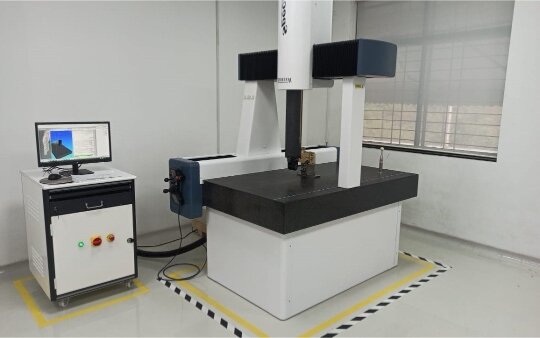
Shengen's benadering van tolerantiegarantie
Het handhaven van precisie vereist structuur, teamwerk en de juiste technologie. Bij Shengen combineren we moderne apparatuur, gedetailleerde documentatie en nauwe samenwerking om ervoor te zorgen dat elk onderdeel aan de tolerantiedoelen voldoet.
Gekalibreerde apparatuur en bekwame technici
Onze werkplaats gebruikt gecertificeerd meetgereedschap dat regelmatig wordt gekalibreerd om te voldoen aan internationale normen. Instrumenten zoals coördinatenmeetmachines (CMM's), digitale schuifmaten en lasersystemen worden voor gebruik gecontroleerd om een consistente nauwkeurigheid te garanderen.
Gereedschap alleen is niet genoeg. Bekwame technici behandelen elke meting met zorg. Ons team wordt voortdurend getraind in inspectie, kalibratie en tolerantieanalyse. Ze begrijpen hoe materialen en fabricagemethoden de precisie beïnvloeden en kunnen in realtime aanpassingen doen om de kwaliteit te handhaven.
Gedocumenteerde kwaliteitsworkflow
We volgen een kwaliteitsmanagementsysteem gebaseerd op ISO-normen. Elke stap in ons inspectieproces wordt gedocumenteerd. Elke batch bevat gedetailleerde meetgegevens, procescontrolelogboeken en inspectierapporten voor volledige traceerbaarheid.
Alle meetinstrumenten worden bijgehouden om ervoor te zorgen dat er regelmatig kalibratieschema's worden bijgehouden. Interne audits bevestigen dat alle procedures voldoen aan ISO 9001 en aanverwante normen. Deze structuur houdt ons inspectieproces consistent, transparant en betrouwbaar.
Samenwerking tussen afdelingen
Tolerantiegarantie begint voordat de productie begint. Onze engineering- en kwaliteitsteams werken samen om tekeningen te beoordelen en mogelijke uitdagingen te bespreken. Vroegtijdige ontwerpevaluaties helpen bij het identificeren van risico's met betrekking tot materiaalkeuze of proceskeuze.
Deze samenwerking vermindert dubbel werk en zorgt ervoor dat het ontwerp overeenkomt met de werkelijke productiemogelijkheden. Door de expertise van verschillende afdelingen te delen, bereiken we herhaalbare precisie en vertrouwen in elk prototype en elke productiebatch.
Ontwerpen voor maakbare toleranties?
Goede ontwerpkeuzes helpen productieproblemen voorkomen. Het zorgvuldig instellen van toleranties zorgt voor de juiste balans tussen prestaties, kosten en productiegemak.
Balanceren tussen functionaliteit en kosten
Elk onderdeel heeft zowel kritische als niet-kritische kenmerken. Oppervlakken die van invloed zijn op de assemblage, zoals bevestigingsgaten, koppelingsranden of uitlijnsleuven, hebben vaak nauwe toleranties nodig. Oppervlakken die niet van invloed zijn op de functie kunnen lossere toleranties gebruiken. Te hoge toleranties verhogen de productiekosten en verlengen de doorlooptijd zonder de prestaties te verbeteren.
Ontwerpers moeten nadenken over hoe elke tolerantie het doel van het onderdeel ondersteunt. Het gebruik van standaardtolerantiewaarden waar mogelijk houdt de fabricage eenvoudiger en consistenter. Door een balans te vinden tussen precisie en bruikbaarheid kunnen fabrikanten nauwkeurige onderdelen maken zonder al te veel moeite.
DFM (ontwerp voor maakbaarheid) Advies
Vroegtijdige communicatie tussen ontwerpers en fabrikanten voorkomt onrealistische tolerantiedoelen. Een DFM-review onderzoekt de geometrie, materialen en proceslimieten voordat de productie begint. Fabrikanten kunnen dan aanpassingen aanbevelen die de functie intact houden en tegelijkertijd de productie vereenvoudigen.
Als een lasergesneden element bijvoorbeeld extreem strak moet worden uitgelijnd, kan de ontwerper de tussenruimte of gatdiameter aanpassen aan de typische mogelijkheden van de machine. Door deze details in een vroeg stadium aan te pakken, wordt voorkomen dat het ontwerp later moet worden aangepast en wordt ervoor gezorgd dat het onderdeel aan de werkelijke productieomstandigheden voldoet.
Veelvoorkomende ontwerpaanpassingen
Kleine aanpassingen in het ontwerp kunnen de fabricage soepeler en nauwkeuriger maken. Het vergroten van de buigradius vermindert spanning en minimaliseert terugvering. Het vereenvoudigen van lasverbindingen verkort de insteltijd en beperkt warmtevervorming. Het aanpassen van de plaatsing van gaten of het toevoegen van locatielipjes verbetert de uitlijning van onderdelen tijdens assemblage.
Zelfs kleine aanpassingen kunnen een groot verschil maken in consistentie en herhaalbaarheid. Als ontwerpers en technici vanaf het begin nauw samenwerken, creëren ze onderdelen die zowel nauwkeurig als efficiënt te maken zijn, waardoor resultaten van hoge kwaliteit worden geleverd met minder productieproblemen.
Wat gebeurt er als toleranties te krap zijn om te bereiken?
Wanneer de toleranties groter zijn dan het proces kan leveren, zijn aanpassingen nodig. Door vroegtijdig samen te werken kunnen ingenieurs en ontwerpers het onderdeel functioneel houden zonder de productie te complex te maken.
Technische beoordeling en feedback
Voordat de productie start, controleert ons engineeringteam elke tekening op haalbaarheid. Ze controleren afmetingen, materialen en processen om eventuele risico's in verband met toleranties vast te stellen. Diepe bochten, krappe afstanden tussen gaten of dunne wanden zijn standaardkenmerken die de nauwkeurigheid in gevaar kunnen brengen.
Tijdens deze beoordeling geven technici duidelijke feedback over gebieden die mogelijk wijzigingen vereisen. Door deze problemen in een vroeg stadium te identificeren, voorkomen we verspilling van tijd en kosten door mislukte onderdelen of proefruns. Deze proactieve aanpak zorgt ervoor dat de gespecificeerde toleranties overeenkomen met de werkelijke productiecapaciteit.
Aanbevolen alternatieven
Als een bepaalde tolerantie niet kan worden bereikt door standaardproductie, zijn er verschillende praktische opties. Door het tolerantiebereik iets te vergroten kan vaak dezelfde functie behouden blijven terwijl de productie eenvoudiger wordt. Door een stabieler materiaal te kiezen, zoals roestvast staal in plaats van aluminium, kan thermische vervorming worden beperkt.
Voor vormen die een zeer hoge nauwkeurigheid vereisen, kan een secundair proces, zoals CNC frezen, de afmetingen verfijnen nadat het vormen of lassen heeft plaatsgevonden. Deze combinatie maakt kosteneffectieve fabricage met plaatselijke precisie mogelijk, waarbij een balans wordt gevonden tussen prestaties en efficiëntie.
Shengen's ondersteuning voor ontwerpwijzigingen
Bij Shengen helpen we klanten om ontwerpen aan te passen wanneer toleranties te krap zijn om aan te voldoen. Onze ingenieurs beoordelen CAD-bestanden en raden praktische updates aan die een balans vinden tussen precisie en produceerbaarheid, zodat het ontwerp optimaal blijft.
We leveren ook herziene 2D- en 3D-tekeningen die de geoptimaliseerde toleranties, materialen en processen weergeven. Prototypes controleren deze aanpassingen voordat de massaproductie begint. Door nauwe samenwerking zorgen we ervoor dat elk onderdeel nauwkeurig en functioneel is en klaar is voor betrouwbare productie.
Klaar om ervoor te zorgen dat uw onderdelen voldoen aan de precisie die ze verdienen? Laten we uw tekeningen beoordelen op haalbaarheid van toleranties. Upload uw CAD-bestanden vandaagen onze ingenieurs zullen ze evalueren op maakbaarheid, nauwkeurigheid en kostenefficiëntie.
Hey, ik ben Kevin Lee

De afgelopen 10 jaar heb ik me verdiept in verschillende vormen van plaatbewerking en ik deel hier de coole inzichten die ik heb opgedaan in verschillende werkplaatsen.
Neem contact op

Kevin Lee
Ik heb meer dan tien jaar professionele ervaring in plaatbewerking, gespecialiseerd in lasersnijden, buigen, lassen en oppervlaktebehandelingstechnieken. Als technisch directeur bij Shengen zet ik me in om complexe productie-uitdagingen op te lossen en innovatie en kwaliteit in elk project te stimuleren.

